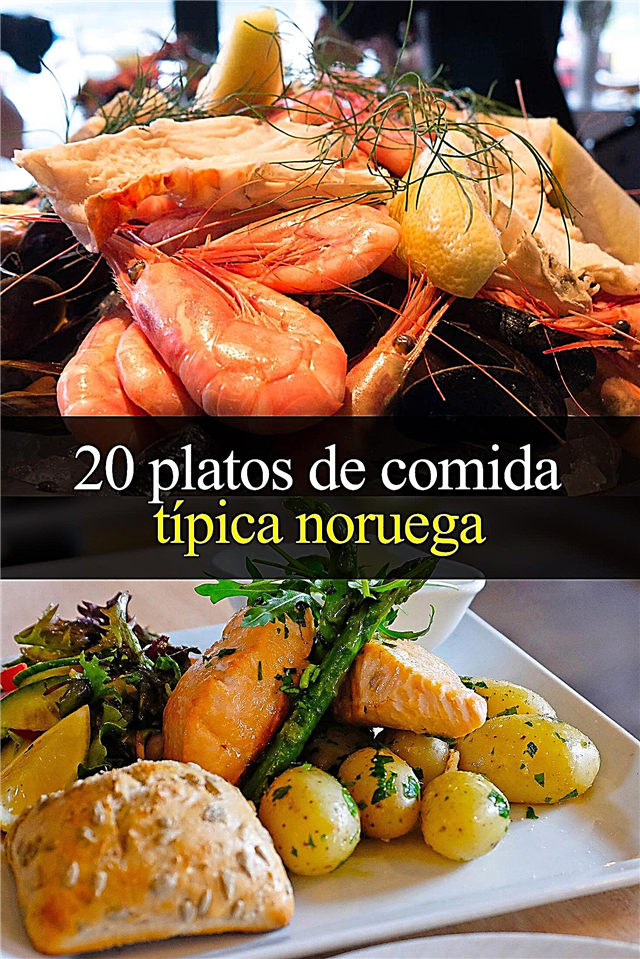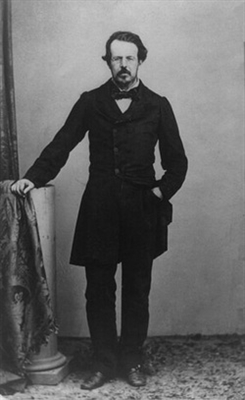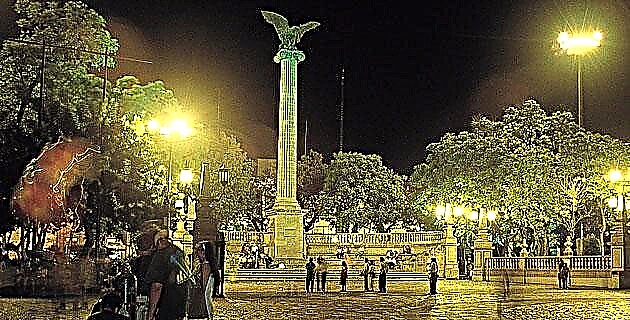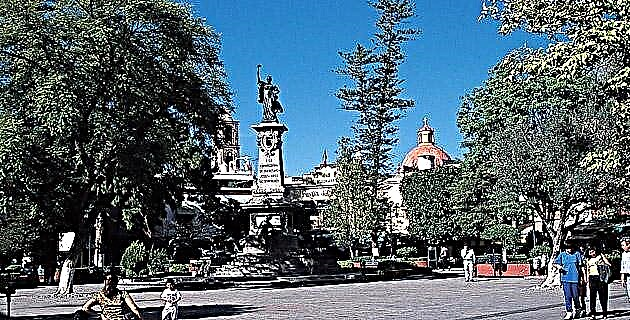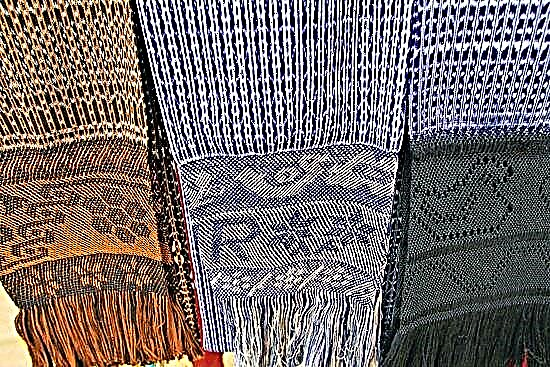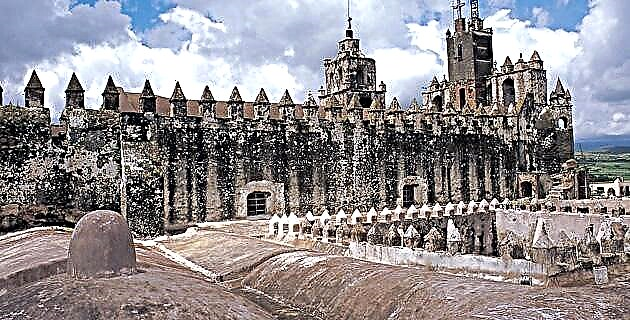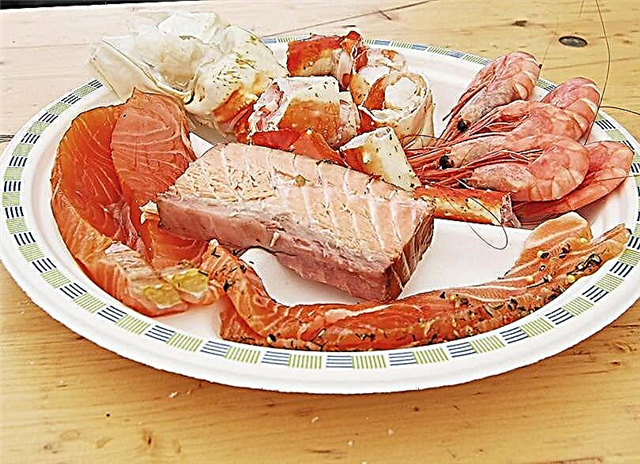Can you imagine eating a reindeer or whale steak? These and other dishes are part of the fascinating typical Norwegian food.
In the following list you will find the best that the exotic and delicious gastronomy of the Nordic country has to offer, one of the highest standard of living in the world.
1. Fårikål
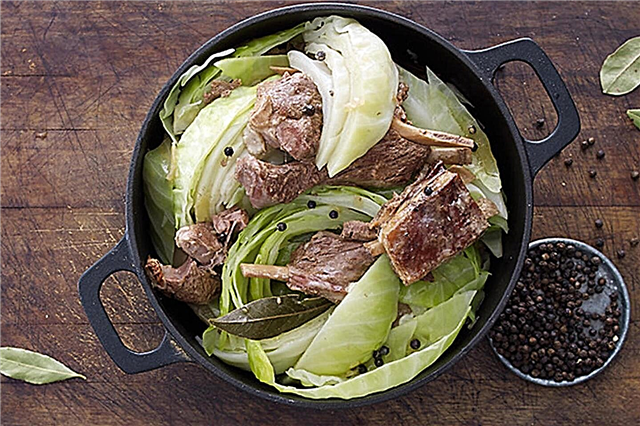 Fårikål is a Norwegian lamb cabbage stew popular in the cold fall and winter months. It is typical to prepare the first one when autumn begins and the slaughter of the lamb begins. It is a kind of national dish, its day being the last Tuesday in September.
Fårikål is a Norwegian lamb cabbage stew popular in the cold fall and winter months. It is typical to prepare the first one when autumn begins and the slaughter of the lamb begins. It is a kind of national dish, its day being the last Tuesday in September.
The recipe originated in Vestlandet, a south-western region that borders the Atlantic Ocean, and later spread throughout the rest of the country. It takes several hours to cook in a casserole and is served with potatoes in their skins.
Put the fattiest pieces of lamb in the bottom of a cauldron and alternate layers of cabbage strips with tablespoons of wheat flour, seasoning with salt and black peppercorns.
2. Finnbiff
Reindeer meat will be exotic in Mexico and Latin America, but it is not so in Norway, Finland, or other northern European countries, where it is very expensive, since a 300 gram cut can cost 20 euros in a gourmet shop , so it is usually intended for haute cuisine.
Its flavor is similar to that of beef, but a little softer, more tender, very easy to chew and with practically zero fat.
Finnbiff is a delicious reindeer meat dish that mixed with mushrooms and lingonberries, represents a unique Norwegian gastronomic experience.
3. Geitost (brunost)
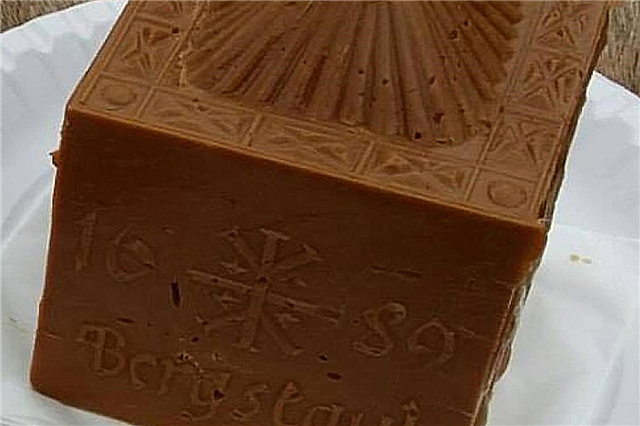 Geitost or goat cheese is one of the most popular dairy products in Norway. It is also called brunost, which means "brown cheese" because of its characteristic color, one that is caused by the heating of the milk sugars during cheese production.
Geitost or goat cheese is one of the most popular dairy products in Norway. It is also called brunost, which means "brown cheese" because of its characteristic color, one that is caused by the heating of the milk sugars during cheese production.
There is a well-known name "gudbrandsdalsost" which means that the cheese was made in Gudbrandsdal, a rural Norwegian district in the great valleys of Østlandet or eastern Norway.
Geitost cheese is characterized by its definite sweet taste and bitter notes, which is a consequence of the type of milk and the production process.
Its flavor is most intensely felt when eaten fresh and cut into thin slices. It is widely used for sandwiches, sandwiches, and sweets.
4. Norwegian smoked salmon cream
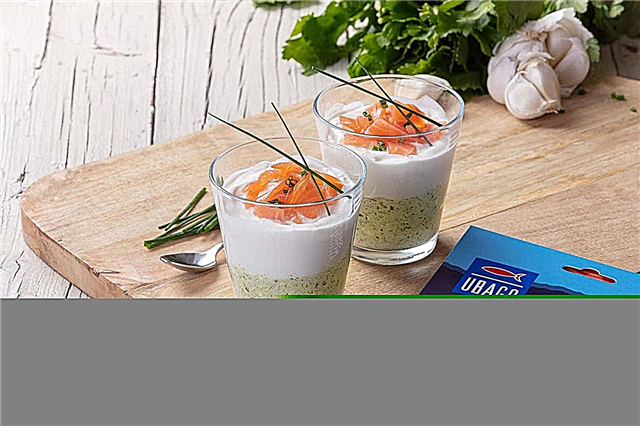 Norway was the pioneer country in salmon aquaculture in the 1970s. Today, salmon raised in the Norwegian fjords are reputed to be the best in the world.
Norway was the pioneer country in salmon aquaculture in the 1970s. Today, salmon raised in the Norwegian fjords are reputed to be the best in the world.
Aquaculture represents the second largest industry in the country and salmon, exported to more than 100 countries, is famous for its flavor, health (thanks to the clean and pure water of the fjords) and sustainability.
Norwegians eat fried, cooked, smoked and cream salmon, among other recipes.
Blend strips of smoked salmon with cooked vegetables (carrot, onion, leek) plus boiled potatoes in a fish broth, until you reach the desired texture. If necessary, add more broth.
5. Whale steak
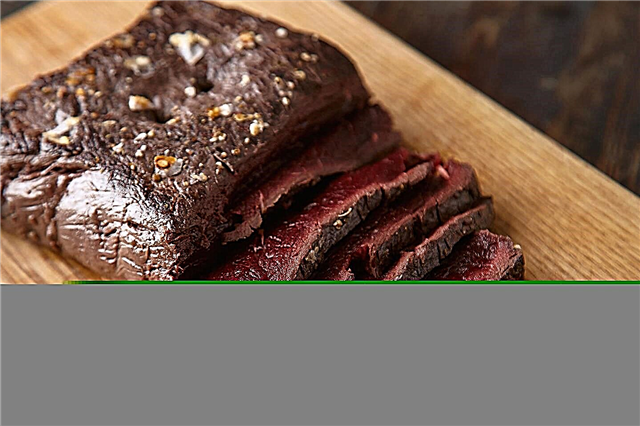 Norway is one of the leading countries in the efforts for the sustainability of the planet and has a controlled whaling.
Norway is one of the leading countries in the efforts for the sustainability of the planet and has a controlled whaling.
It is estimated that about 100,000 of these species live in Norwegian waters and the capture of about 1,300 specimens is authorized annually. Therefore, Oslo and other cities in the country are one of the few places in the world where you can taste a steak of the colossal animal, without feeling that you are contributing to its extinction.
Many Norwegian restaurants have whales on their menus and the consumption of the dishes is not controversial in the country. Its meat is also available in fish markets.
The price of a whale fillet in a Norwegian restaurant can be in the order of 300 NOK (Norwegian crowns), equivalent to 33 USD.
6. Sursild
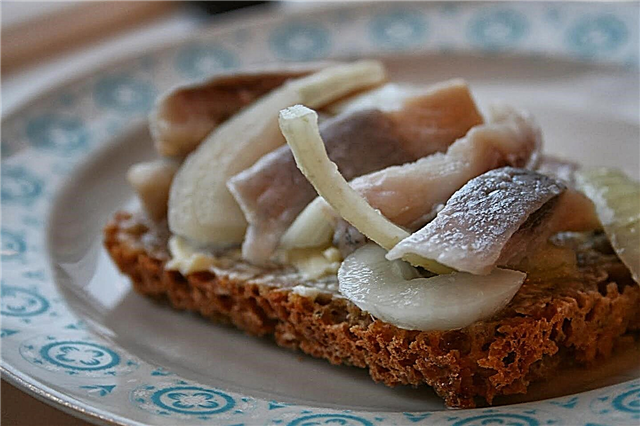 Herrings are part of the typical Norwegian food and the Nordics eat them pickled and fried.
Herrings are part of the typical Norwegian food and the Nordics eat them pickled and fried.
The common or Atlantic herring is the sixth most consumed sea species in the world and the Norwegian passion for this fish is shared by Sweden, Denmark, the Netherlands and the Baltic countries.
The recipe for pickled herring is called sursild in Norway. It is prepared with a pickling mixture made with ketchup, vinegar, soy sauce, salt, and pepper.
The dressing is poured over the rolled herring fillets and they are ready to eat.
7. Tørrfisk
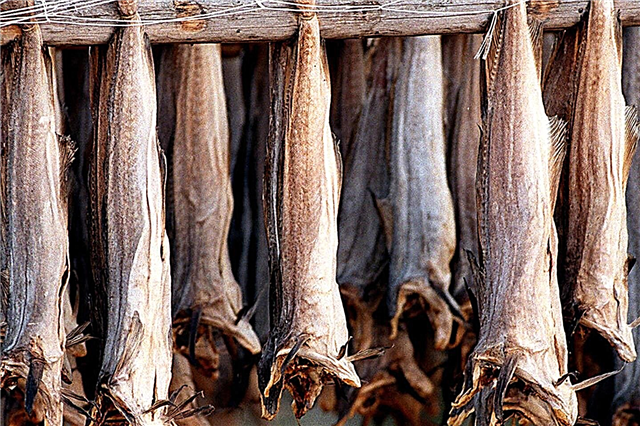 Tørrfisk is fish (usually cod) that is dried in the sun and in the freezing wind without the use of salt, and placed in large wooden frames.
Tørrfisk is fish (usually cod) that is dried in the sun and in the freezing wind without the use of salt, and placed in large wooden frames.
It is a Norwegian tradition that dates back to the 12th century, especially on the Lofoten and Vesterålen islands in the north of the country.
The tørrfisk played a fundamental role during the Viking expeditions, supplying the necessary food for the long sea voyages of these Nordic warriors.
The "modern Vikings" continue to eat cod in various ways. One of them, and very simple, is to desalt dried cod fillets and cook them with a mixture of potatoes, onions and fennel cut into slices, garnished with garlic, chillies, roasted red peppers, pepper and pink Himalayan salt.
8. Lutefisk
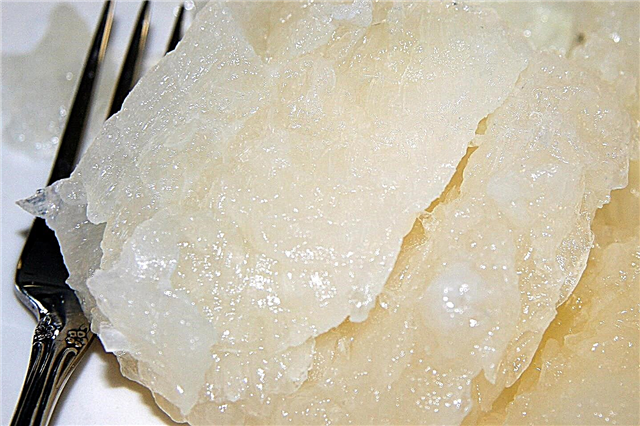 Lutefisk is another exotic Norwegian dish of dry white fish, which is preferable to eat in a specialized restaurant, since the recipe is complicated and involves the use of caustic soda or sodium hydroxide, a risky chemical to handle, very corrosive and that can cause severe burns.
Lutefisk is another exotic Norwegian dish of dry white fish, which is preferable to eat in a specialized restaurant, since the recipe is complicated and involves the use of caustic soda or sodium hydroxide, a risky chemical to handle, very corrosive and that can cause severe burns.
In lutefisk, the dried fish is put in contact with dilute caustic soda, which gives the cod or species used an almost gelatinous texture.
The preparation is delicious, but laborious. First the dried fish is immersed in water for 5 days (changing it daily) to saturate it with liquid.
Then it is immersed in a solution of cold water with caustic soda for 2 more days. The fish grows in volume until it becomes larger than the original piece, but loses half of its protein content, adopting its famous gelatinous texture. Next, he drowns for another 4 days in cold water (with daily changes) to clean it.
Cooking fish is very simple. You have to place the lutefisk in a pan without adding anything else, cover and put on a very low heat for 20 to 25 minutes.
9. Battered cod tongues
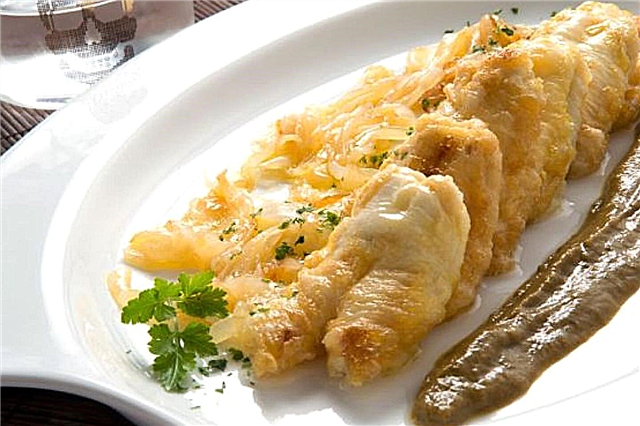 Cod fishing is another of Norway's key economic activities and each year the national fishing fleet catches some 350 thousand tonnes in the icy waters of the Nordic seas.
Cod fishing is another of Norway's key economic activities and each year the national fishing fleet catches some 350 thousand tonnes in the icy waters of the Nordic seas.
Norwegian cod can measure up to one meter in length and with its tongue one of those exotic dishes that characterize the country is prepared.
Cutting the tongue of codfish is a job reserved for children on the Norwegian island of Senja, in the Barents Sea, where it is a tradition.
A recipe with the cod is its fried tongues battered with egg and breadcrumbs, which can be accompanied with a salad of lettuce, sliced cucumbers and peppers in strips.
10. Rakfisk
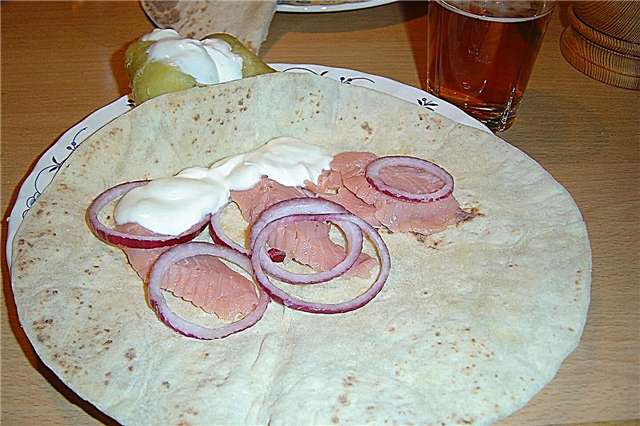 Rakfisk or fermented trout is another Norwegian national dish. The usual is to ferment the salted fish for 2 or 3 months, cut it into fillets and eat it raw with cooked potatoes, bread and dressings.
Rakfisk or fermented trout is another Norwegian national dish. The usual is to ferment the salted fish for 2 or 3 months, cut it into fillets and eat it raw with cooked potatoes, bread and dressings.
The earliest historical record of rakfisk dates from the mid-14th century, but the recipe is believed to date back much earlier.
One of the most popular ways to eat rakfisk in Norway is to sauté salted fermented steaks with a dressing of heavy cream, salt, and pepper, topping with sautéed onions and boiled potatoes.
One of the most popular gastronomic events in the country is the Norwegian Rakfisk Festival, held at the end of October in the Valdres district of south-central Norway.
11. Royal red crab skewers
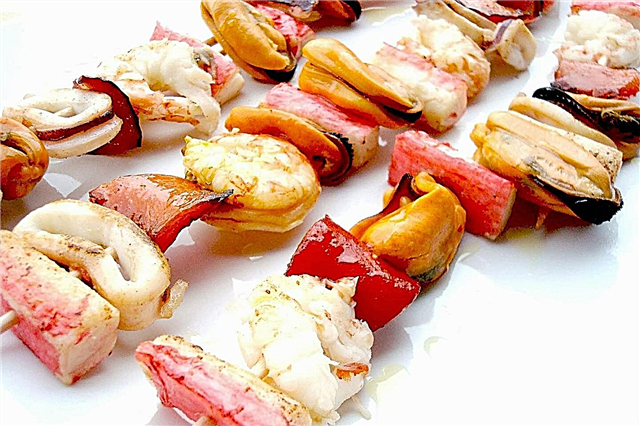 The red king crab is a species native to Russia that was introduced to the Barents Sea in the early 1960s. It began to appear in Norwegian waters in the mid-1970s and since then it has been a fish with which some delicacies are prepared of the national cuisine.
The red king crab is a species native to Russia that was introduced to the Barents Sea in the early 1960s. It began to appear in Norwegian waters in the mid-1970s and since then it has been a fish with which some delicacies are prepared of the national cuisine.
The remote Norwegian town of Kirkenes, near the Russian and Finnish borders, has a tourist schedule around fishing and tasting this crab, one that can weigh up to 12 kg.
Boil the legs of a king crab, extract the meat and cut it into pieces, which you must insert on the skewers, alternating them with cherry tomatoes and lettuce. Sauce with mayonnaise.
12. Kjøttkaker
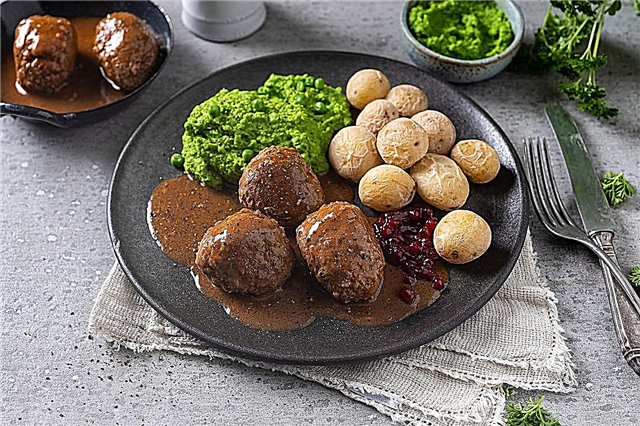 Kjøttkaker means meatloaf and is the Norwegian version of meatballs. This dish of typical Norwegian food is simple and delicious and is usually served with brown sauce, carrots and potatoes.
Kjøttkaker means meatloaf and is the Norwegian version of meatballs. This dish of typical Norwegian food is simple and delicious and is usually served with brown sauce, carrots and potatoes.
In Norway you will find gourmet preparations in restaurants, but you can also make the dish yourself. The meat can be beef, pork or lamb.
The dough to wrap the meat mince is prepared with wheat or potato flour. Some recipes add cornmeal breadcrumbs, milk and eggs to the dough.
13. Sea urchins
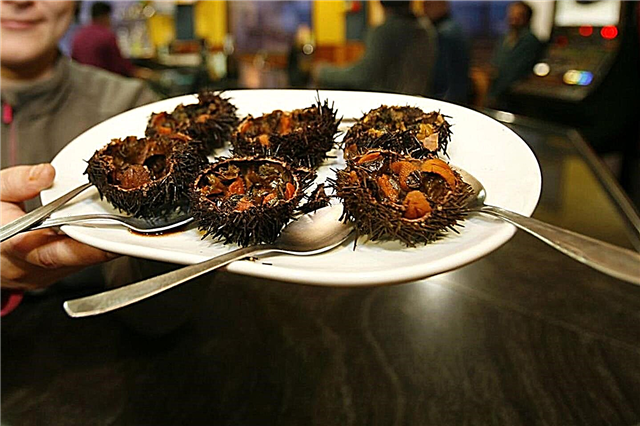 The sea urchin is one of the specialties of gourmet cuisine. They are eaten raw and cooked and are an excellent source of protein and minerals, especially iodine, phosphorus, iron, and potassium.
The sea urchin is one of the specialties of gourmet cuisine. They are eaten raw and cooked and are an excellent source of protein and minerals, especially iodine, phosphorus, iron, and potassium.
Norway develops in its fjords a powerful aquaculture of white urchins, a species that feeds on the waste generated in salmon farming centers that are found in the fjords themselves, thus helping to balance ecosystems.
Connoisseurs say that the best way to eat sea urchins to feel them in all their intensity is freshly caught and raw, with a little lemon. If you buy them fresh, remove a few picks first before eating them.
14. Lapskaus
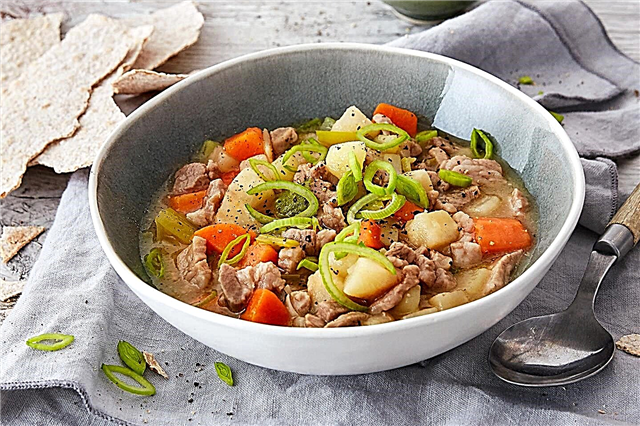 Lapskaus is a traditional Norwegian stew made with beef or lamb, plus vegetables (mainly potatoes), aromatic herbs and spices. There are also pork and ham versions. It can be made with fresh meat or with leftover cooked meat.
Lapskaus is a traditional Norwegian stew made with beef or lamb, plus vegetables (mainly potatoes), aromatic herbs and spices. There are also pork and ham versions. It can be made with fresh meat or with leftover cooked meat.
It is a thick stew that has been historically associated with the mincemeats that European sailors made, so it could come from the Viking age.
The sauce is made with carrots, onions, and cabbage and eaten with bread.
The finest and most expensive lapskaus are those made with fresh veal, while the cheapest are those made with leftover meat.
15. Nordic meatballs in horseradish sauce
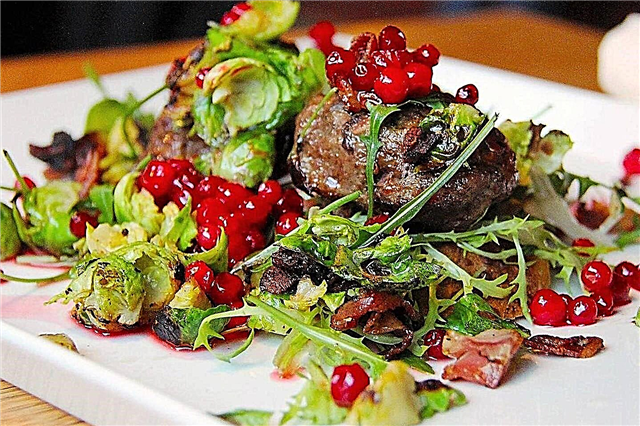 These meatballs or fish balls are another classic dish in Norwegian cuisine. They are very easy to prepare and are usually served with bread or cooked potatoes and carrots.
These meatballs or fish balls are another classic dish in Norwegian cuisine. They are very easy to prepare and are usually served with bread or cooked potatoes and carrots.
A popular recipe uses equal parts cod and hake, using the fish heads to make a broth, first used to knead the balls and then to boil them and as an ingredient in the horseradish sauce.
Horseradish, also known as horseradish and horseradish, is a Russian species that came to Norway, often used to replace wasabi in Japanese cuisine.
In these Nordic meatballs the horseradish is mixed with flour and butter and to make the sauce, with a little fish broth.
16. Krumkake
 Krumkake is a Norwegian cone-shaped cookie that is eaten at Christmas.
Krumkake is a Norwegian cone-shaped cookie that is eaten at Christmas.
The Norwegians prepare it on a special double electric krumkake griddle, in which they are cooked on both sides without turning them over and shaped while hot with wooden or plastic cones.
They can also be made in a regular skillet by flipping them to cook them on both sides and manually rolling them into cones.
They are eaten alone or filled with whipped cream. It is said that the secret of krumkake is to use equal amounts of flour, sugar and butter.
They have a pinch of ground cardamom seeds that impart their characteristic aroma and flavor.
17. Raspeball
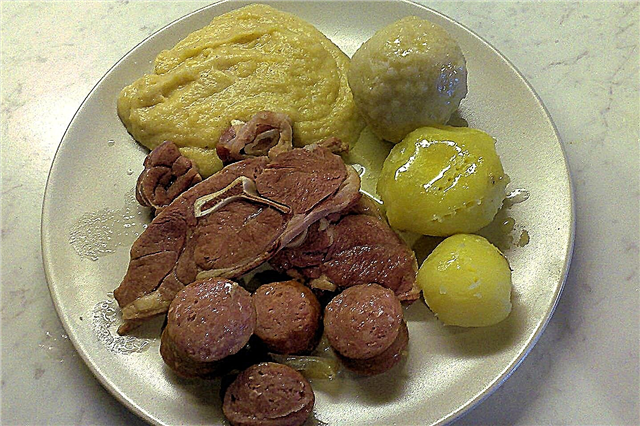 Raspeballs are potato dumplings typical of Norwegian cuisine. They are prepared with a dough based on raw and cooked potatoes, plus barley flour.
Raspeballs are potato dumplings typical of Norwegian cuisine. They are prepared with a dough based on raw and cooked potatoes, plus barley flour.
In the Vestlandet region, along the Atlantic coast of Norway, it is common to prepare them on Thursdays when they often appear on restaurant menus as a dish of the day.
There are a great variety of versions of raspeball. Some incorporate pieces of lamb or salted pork into the dough.
The meatballs can be boiled in water or in a vegetable or lamb and / or pork bone broth.
18. Smalahove
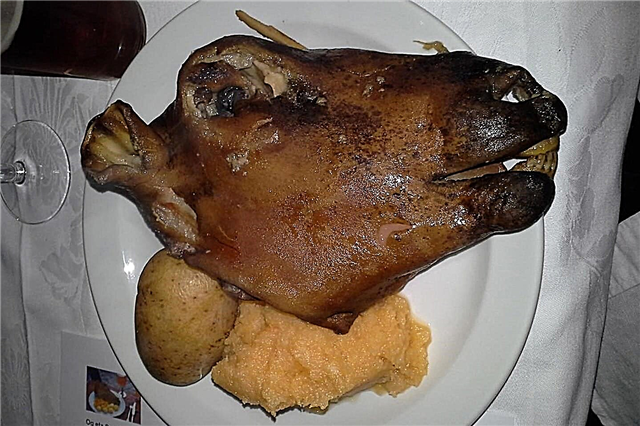 It may not be the most attractive presentation dish of typical Norwegian food, but the smalahove or boiled lamb's head is very popular in the country.
It may not be the most attractive presentation dish of typical Norwegian food, but the smalahove or boiled lamb's head is very popular in the country.
It is a traditional delicacy that Norwegians cook in a relaxed way on holidays, especially at Christmas. It is usually eaten with mashed potatoes and kohlrabi.
It began as a dish for people with fewer resources, but today it is a haute cuisine delight.
Smalahove is traditionally prepared on the Sunday before Christmas Day.
Norwegians eat the eyes and ears first, leaving the tastiest parts of the tongue and cheeks for last.
Usually each person is served half a head. Butchers are experts at preparing lamb for smalahove.
It is a dish with a long tradition in the west of the country, especially in the municipality of Voss where it emerged to take advantage of all parts of the sheep. Although it can be prepared with the head of adult sheep, it is softer with lamb.
19. Pinnekjøtt
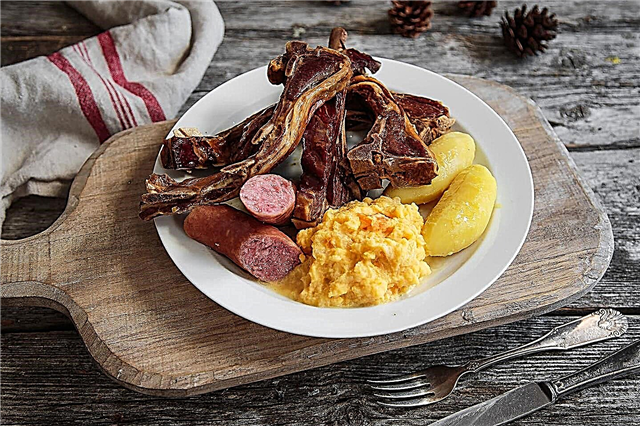 Pinnekjøtt, a typical Norwegian dish that literally translates to stick meat, is the main Christmas meal in the west of the country. It is prepared with salted lamb ribs that are desalted for 30 hours. In Norwegian butchers you can get the ribs already desalted and ready to cook.
Pinnekjøtt, a typical Norwegian dish that literally translates to stick meat, is the main Christmas meal in the west of the country. It is prepared with salted lamb ribs that are desalted for 30 hours. In Norwegian butchers you can get the ribs already desalted and ready to cook.
It is called stick meat because in the traditional recipe the lamb ribs are placed on barkless birch branches, although modernity has led to the use of a metal rack. It is served with purees or cooked vegetables and is accompanied with aquavit, beer or red wine.
The Norwegians apply the 30/3 rule so that the meat is perfect. This consists of 30 hours of desalting and 3 hours of steaming.
The first documented recipe for pinnekjøtt dates back to the 18th century, although this way of eating lamb is believed to be older.
An estimated 1/3 of Norwegians eat pinnekjøtt on Christmas Eve, while 70% do so during the holidays.
The dish was included in 2017 in the list of protected food traditions.
20. Ribbe
Ribbe is a dish of pork ribs that disputes pinnekjøtt for supremacy as the main meal of Norwegian Christmas.
The ribs cook slowly and the idea is to make it crispy by turning up the heat at the end.
It is served with sauerkraut, sausage, meatballs and other hearty side dishes that add calories in the frozen Norwegian winter.
What do you eat in Oslo?
The restaurants of the Norwegian capital offer all the dishes of the national cuisine.
Norwegians eat a lot of fish and seafood, and in Oslo you will find a variety of dishes of salmon, cod, fermented trout and king crab, including the popular fish meatballs.
Lamb, beef and pork stews, as well as the more exotic national dishes (reindeer and whale fillets and fish gelatinized with caustic soda), are also available in the restaurants of Huelva.
What is the typical Norwegian drink?
Aquavit, with an alcoholic strength of 40%, is Norway's national drink. A distillate of potatoes and grains flavored with herbs and caraway seeds, dill, cumin and fennel, among others.
Its first reference dates from 1531 in a letter addressed to the Archbishop of Norway, which mentions an aqua vitae (water of life) that supposedly cured all ailments and diseases.
It is essential at Christmas and in the celebrations of May 17 (Constitution Day).
How much does a coffee cost in Norway?
Although its climate is not suitable to produce it, Norway is the largest per capita consumer of coffee in the world.
Norwegians like strong and floury coffee and in Oslo there are plenty of coffee shops where you can have lattes, cappucinos, espressos and any variety you want.
A cappucino costs around 4 euros in a restaurant, less than half the price of a national 500 cc beer.
Typical Norwegian food: traditional breakfast
The typical breakfast in Norway consists of cold cuts sandwiches, cheese slices, dairy spreads and jams.
Most Norwegians drink coffee for breakfast. Others opt for a fruit juice or a glass of milk.
Eggs prepared in various ways, bread, cereals and yogurt are other popular breakfast options in the Nordic country.
Which of these typical Norwegian food dishes did you find the most seductive?
